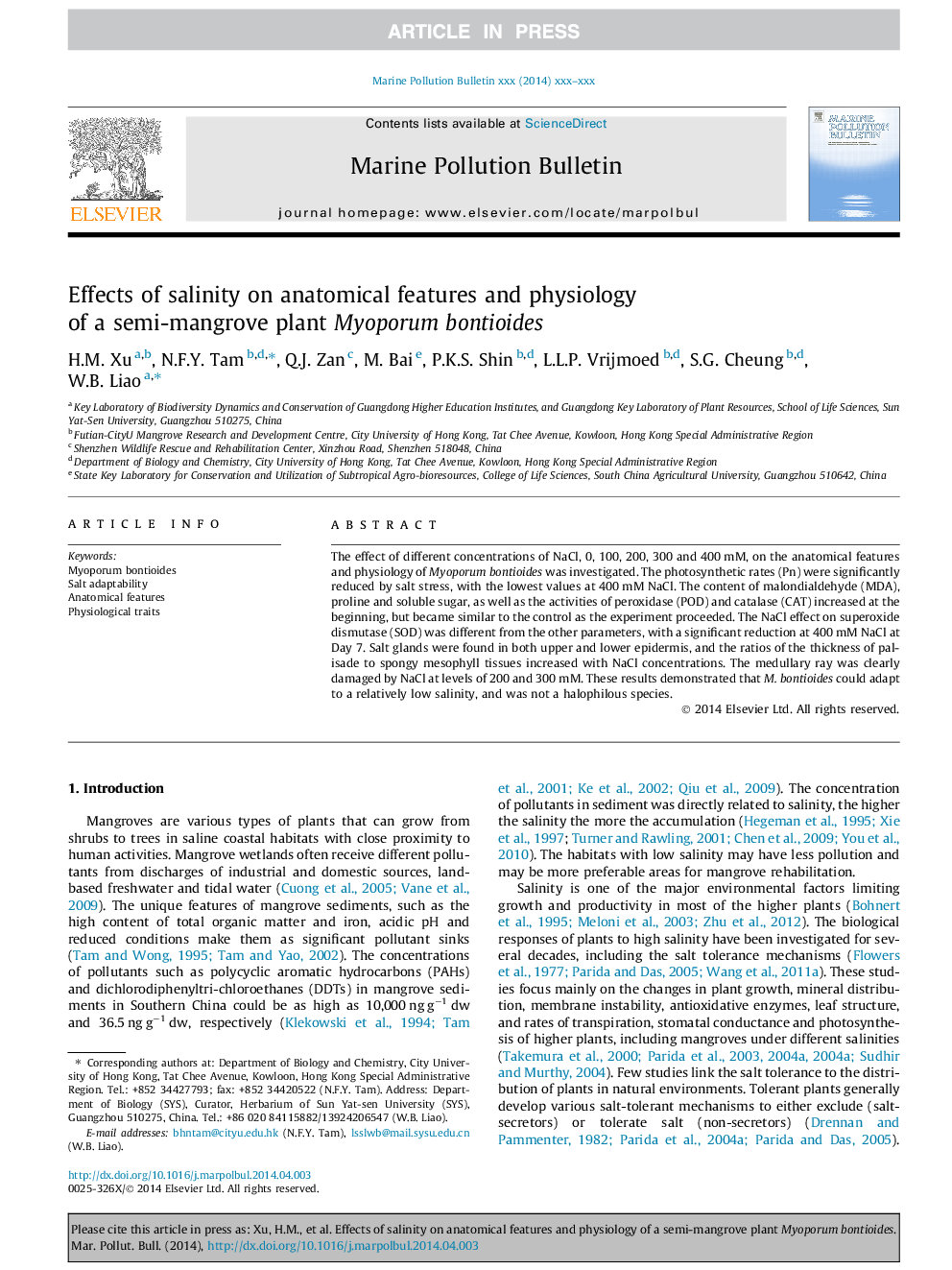| Article ID | Journal | Published Year | Pages | File Type |
|---|---|---|---|---|
| 6358557 | Marine Pollution Bulletin | 2014 | 9 Pages |
Abstract
The effect of different concentrations of NaCl, 0, 100, 200, 300 and 400Â mM, on the anatomical features and physiology of Myoporum bontioides was investigated. The photosynthetic rates (Pn) were significantly reduced by salt stress, with the lowest values at 400Â mM NaCl. The content of malondialdehyde (MDA), proline and soluble sugar, as well as the activities of peroxidase (POD) and catalase (CAT) increased at the beginning, but became similar to the control as the experiment proceeded. The NaCl effect on superoxide dismutase (SOD) was different from the other parameters, with a significant reduction at 400Â mM NaCl at Day 7. Salt glands were found in both upper and lower epidermis, and the ratios of the thickness of palisade to spongy mesophyll tissues increased with NaCl concentrations. The medullary ray was clearly damaged by NaCl at levels of 200 and 300Â mM. These results demonstrated that M. bontioides could adapt to a relatively low salinity, and was not a halophilous species.
Related Topics
Physical Sciences and Engineering
Earth and Planetary Sciences
Oceanography
Authors
H.M. Xu, N.F.Y. Tam, Q.J. Zan, M. Bai, P.K.S. Shin, L.L.P. Vrijmoed, S.G. Cheung, W.B. Liao,
